Back in the 1960s, with a baby daughter and another on the way, I had a second job working at a nursery on weekends (and needed a third). Each fall we brought out the banners calling autumn “California’s second spring.” This was not just some kind of bogus marketing slogan, like “Petunias will add $100K to the value of your home!”
Fall really is a better season than spring in Northern California. No long lines at the garden center. No B-list celebrities hawking miraculous fertilizers on TV. Meaningful football games and major league pennant races at the same time. And California’s best planting time is — arguably, I'll grant — September 15 to October 15. If you plant now, daytime temperatures and the soil are still warm enough to encourage growth, without the occasional brutally hot spells of summer that can torch young plants. Roots can become established before the cool, rainy season, and top growth will be ready to take off next spring.
Except for tender tropicals not equipped to handle the frosts that will come in a couple of months, these conditions suit almost anything you might want to plant now: cool-season flowers and vegetables, perennials, wildflowers, natives, some bulbs. It's also the best time of year to tackle major landscaping — including a lawn, ground covers, a tree for your patio, whatever.
Find your U.S. garden checklist
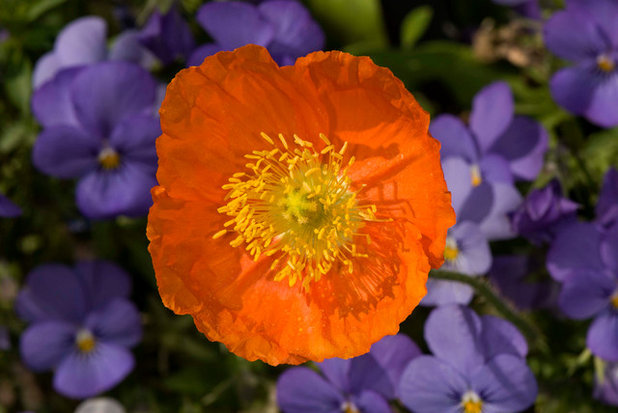
The New York Botanical Garden
Flowers by Christmas. Take advantage of one of the great payoffs of our region: Plant cool-season annuals (
Iceland poppies, pansies, calendulas and more) this month or early next month, and you should have blooms by late November or early December. Blooming slows down a bit over the winter, then flourishes even more in early spring.
Make sure you provide a sunny spot and a bed of bed of loose, well-drained soil that's fortified with compost. Even a few pots of cool-season annuals will make a splash. It’s amazing how eye catching just a few Iceland poppies — their crepe-like flowers fluttering on improbably slender stems — appear when little else is blooming. 'Champagne Bubbles', shown here, is a colorful, dependable strain. The "Iceland" in the name is not poetic license; the plants are hardy and perennial in cold climates. In mild California they shine in fall, winter and spring, then burn out in summer.
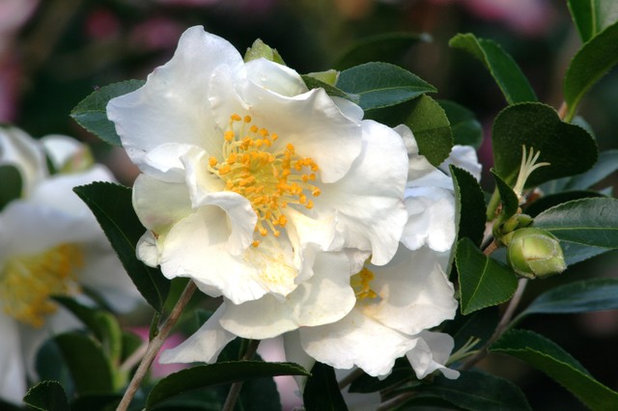
Monrovia
Big-time planting. This is the time to look for garden center bargains and put in plants that will make a difference in your garden. If you want a shrub that performs right now, consider
Sasanqua camellia. It doesn't produce humongous flowers like Japonica camellia, but it blooms delicately (red, pink, white) in early fall through early winter.
Unlike the one-trick-pony Japonica (basically a thick shrub), Sasanqua makes a great landscape plant: It can be low and horizontal as a tall ground cover or foundation plant ('Shishi Gashira'), or upright and tall for a background or even a hedge ('Jean May' and 'Setsugekka', shown here).
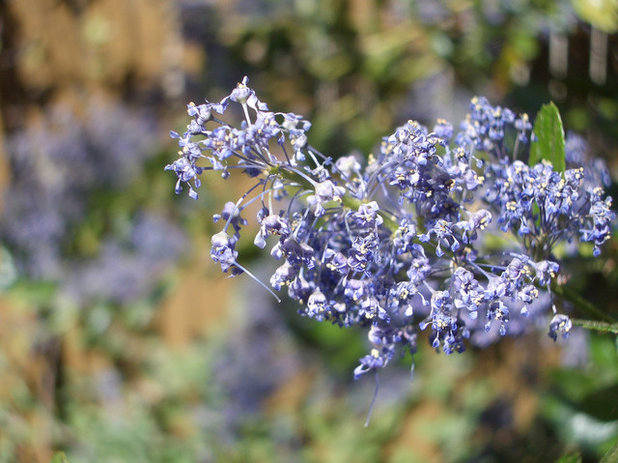 Have faith in natives.
Have faith in natives. California native plants hardly ever look good in small nursery cans, and in fall they look pretty drab and dry — or maybe “dead” is the word I’m looking for. But that’s just their way. Natives tend to shine in spring and go almost dormant in the dry summer months, when they shut down in self-defense. Despite their current looks, this is a good time to plant California natives.
Depending on the species,
Ceanothus (California lilac) can make a quick screen, hedge, ground cover, stand-alone shrub or small tree. For a big, fast evergreen shrub, try 'Ray Hartman' ceanothus, shown here. Planted now, it will need regular watering until the rains come, establish itself during the rainy season, then surge with growth next spring. By next March or April, don’t be surprised to see a foot or two of new growth and clusters of vivid blue flowers.
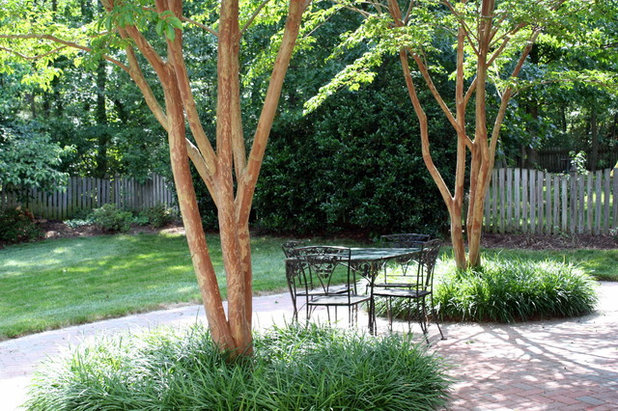
Laura Trevey
A tree for your patio. What makes an ideal tree for a patio or other moderate-size outdoor living area? Generally you’ll want a plant that’s on the small side, good looking when you sit near or under it, well groomed without need for frequent pruning or litter sweep-up, and not requiring frequent pruning or other care.
In Northern California, even in the hottest climates,
crepe myrtle (Lagerstroemia indica) meets that job description. It will do something pretty every day of the year. In the heat of summer, its flowers bloom in bouquet-size clusters of rich shades of red, pink, purple and white. The leaves turn yellow, orange and red in fall. Leafless trees in winter reveal brown and pink bark that is sometimes so smooth it gleams. For a patio tree, depending on your space, you can choose a crepe myrtle with a single trunk or multiple trunks. Beware if you live in a cool coastal climate, where mildew often strikes the foliage and flowers so severely, you probably should make another choice for a prominent role on the patio.
5 Best-Behaved Trees to Grace a Patio
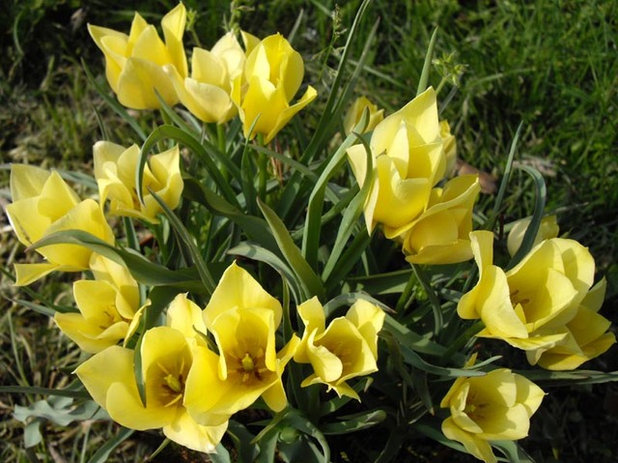 More gardening projects.
More gardening projects. What else to do now? There are many other planting choices, along with some essential projects to keep your garden going strong.
Order bulbs. If you live in Northern California, don’t worry about planting spring-blooming bulbs just yet. No need to plant until mid-October at the earliest, early December at the latest. But you might want to order or shop for tulips, daffodils, freesias and other bulbs now while supplies are abundant. In mild Northern California, tulips need chilling in your refrigerator’s vegetable crisper for four to six weeks before planting.
Prepare planting beds. The best thing you can do now is to get planting beds and planting holes ready for fall planting. As a rule, for beds of annuals and perennials, add 2 to 3 inches of organic matter and work it in to a depth of a foot or so.
Start digging. If you’re planting good-size shrubs and trees, digging the planting hole won’t be easy after such a long, dry season. Moisten the area a day or two ahead: Dig a hole at least several inches deep and as wide as needed for the intended plant, and fill the starter hole with water several times that day. Let it soak in for a couple of days and dig again to the full depth when you plant.
Give existing shrubs and trees a long drink. Check with a shovel or trowel. If you don’t find moisture within a few inches, irrigate with a soaker hose or a slowly running sprinkler — as long as the local water company and your conscience allow it. If historic patterns hold true, after the 2011–2012 dry spell, we may not get significant rain until January 2013. Keep your fingers crossed.





